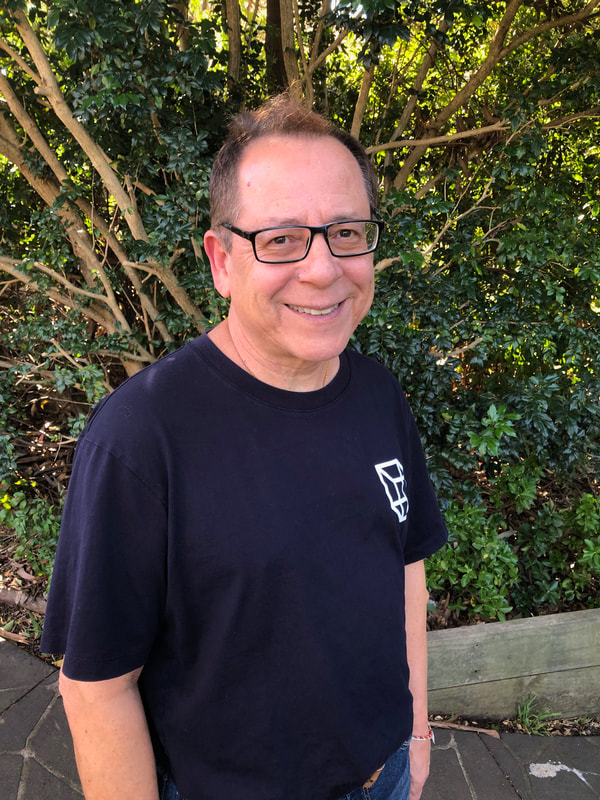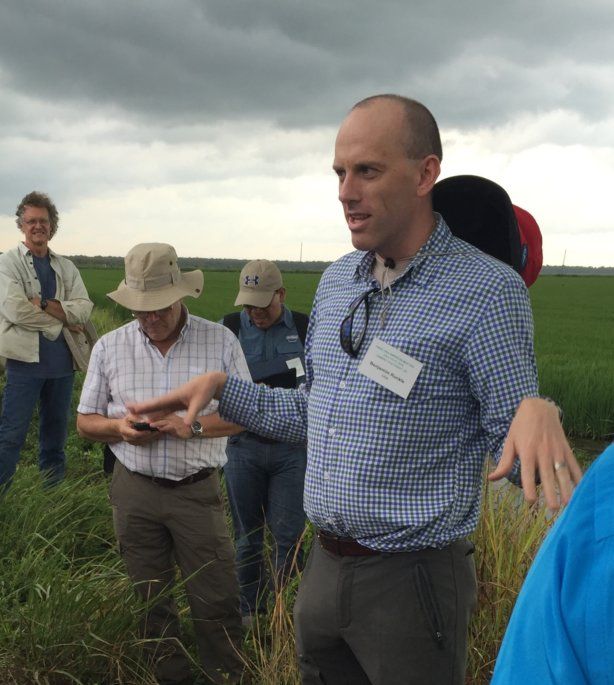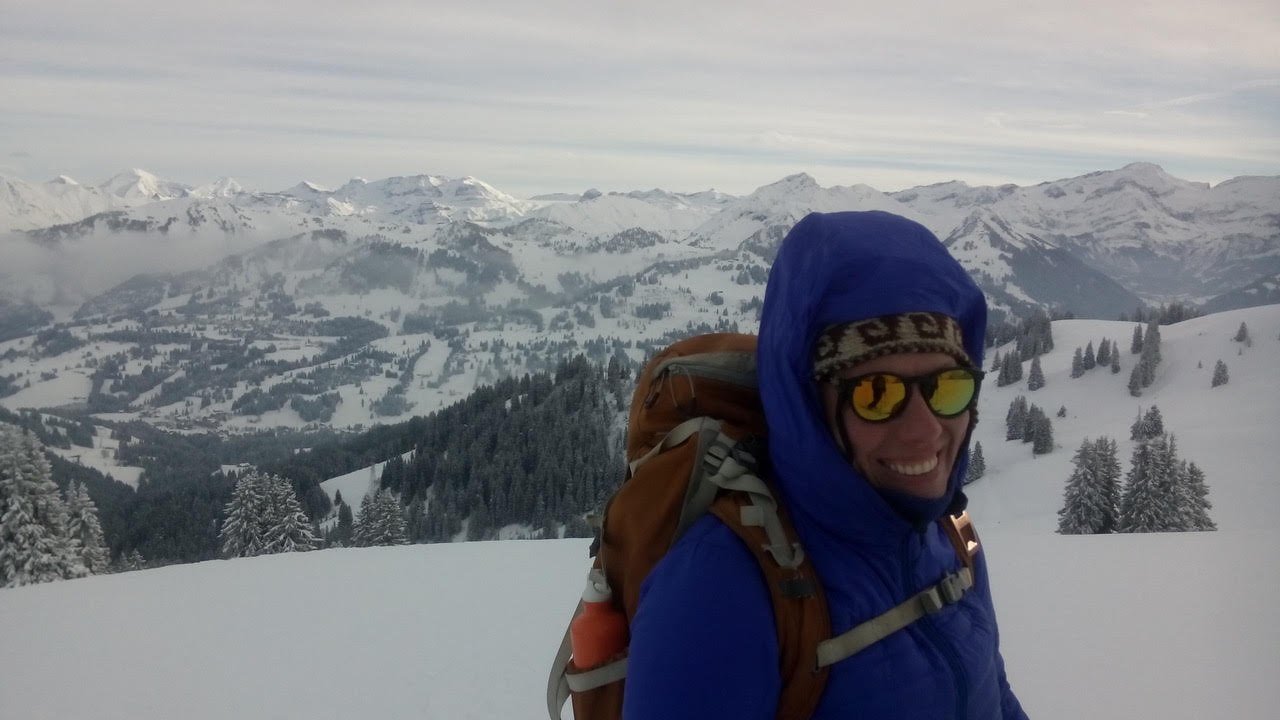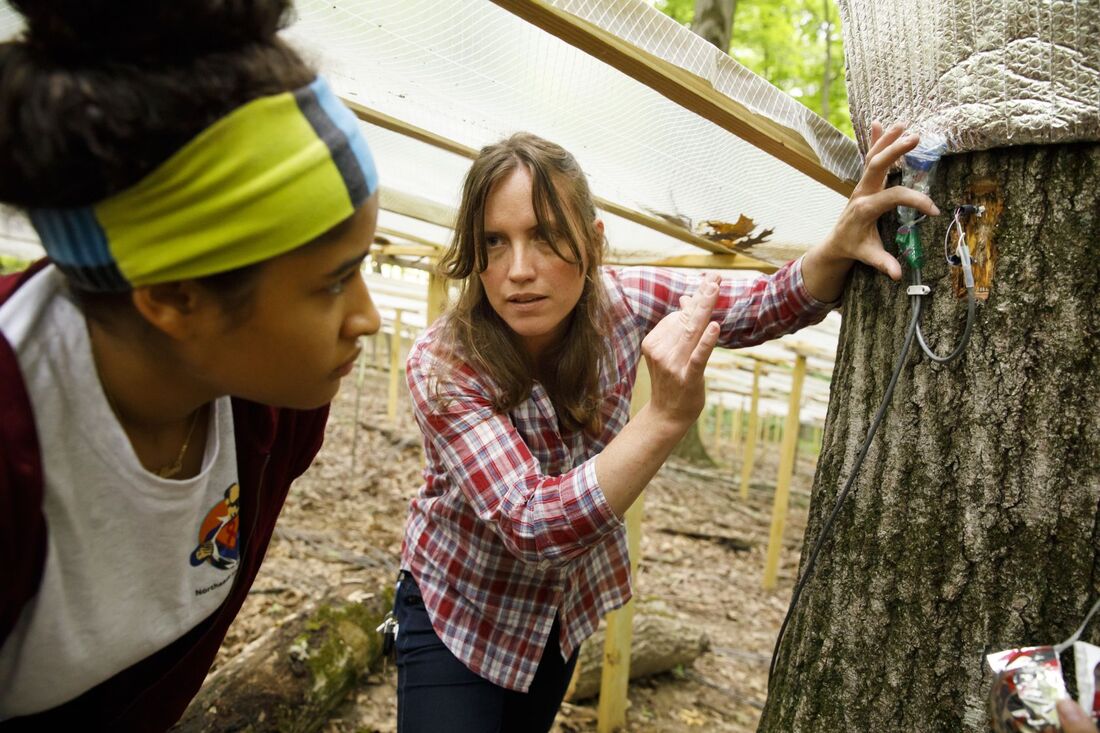I think of ecohydrology mainly from the perspective of mechanistically linking vegetation responses to climate variability, such as through trends in water availability, water-use efficiencies, and/or increasing temperatures. Through my interest in remote sensing, I tend to look at larger scale ecohydrology processes to assess vegetation response rates of different ecosystems to climate variability and extreme events (drought & wet cycles). Satellite data can reveal useful geospatial information on vegetation dynamics and allow us to assess, pixel by pixel, vegetation productivity at weekly intervals in relation to climate information. Relative vegetation responses to the same climate inputs can then be used to identify ecologically sensitive areas as well as resilient, or more buffered vegetation areas. Of course, the best value of satellite data is achieved when coupled with ground information, such as from flux tower sites. By understanding vegetation’s responses to current and historical climate variability we can improve predictions of the future consequences of climate change at ecosystem scales and forecast ecosystem collapse and forest mortality.
What are your undergraduate and graduate degrees in?
I received my BSc in Range Management at the University of Arizona in Tucson, after transferring there in my third year of undergraduate studies following the closure of Prescott College in Prescott, Arizona. I then went to the University of California- Berkeley and completed a MSc in Soil & Plant Biology. My supervisor was John McColl and my thesis investigated ‘acid rain’ leaching through a series of soils. After being introduced to a forensics course at UC Berkeley, I became interested in remote sensing and environmental forensics and returned to the University of Arizona to work under Ray Jackson and Don Post in remote sensing.
How did you arrive at working in/thinking about ecohydrology?
My degrees in soil, water, and plants and subsequent involvement in remote sensing gradually drew me to the field of ecohydrology. My Ph.D was a ground-based remote sensing study in cotton fields of the U.S Water Conservation Lab in Phoenix, Arizona under the mentorship of Ray Jackson. The Lab was at the forefront of water conservation and remote sensing. Then, as an early career scientist, I completed two summer internships at NASA/ GSFC in Maryland, in which my mission was to translate my knowledge of remote sensing in cotton fields to satellites. This led to my becoming a science team member of the forthcoming NASA-MODIS program. Through this satellite program I once again became involved in field work, as part of satellite algorithm global validation work of the satellite vegetation products I was involved in.
I was very surprised at how well our satellite vegetation products, such as vegetation indices, could approximate the seasonality of carbon and water fluxes from Fluxnet. This was true in water-limited semi-arid regions as well as radiation-limited environments as in equatorial Amazon rainforests (although not always true in temperature-limited biomes). This convinced me that satellite data can be directly used in ecohydrologic studies of the earth system, enabling the Earth to be used as a living lab from which to test hypotheses on climate- vegetation interactions. From this I have made many satellite phenology studies which I have linked to field ecohydrology, whether through situ flux tower measures, phenocams, or in situ measurements with spectroradiometers.
What do you see as an important emerging area of ecohydrology?
Ecohydrology has a lot to contribute to climate change research in order for us to understand the rapid changes taking place in seasonally dry ecosystems through the earth. Understanding changes in vegetation phenology, biodiversity, and productivity can benefit from an ecohydrological understanding of the mechanisms and drivers at play. Further, ecological forecasting of ecosystem resilience, tree mortality, and land degradation, amidst climate change, benefits from the ecohydrological approach.
I am particularly excited with the new and advanced satellite missions, such as the geostationary satellite systems, that have started imaging the earth’s surface, from a fixed point in the sky, continuously at 10 minute intervals. This massive amount of publicly available free data has opened the doors to conduct ecosystem assessments at diurnal scales, e.g., land surface temperatures and aerosols, that can be coupled to flux tower sites and air quality stations. Other new satellite sensor systems, such as the Soil Moisture Active-Passive (SMAP) satellite, the LiDAR measuring Global Ecosystem Dynamics Investigation (GEDI), and Orbiting Carbon Observatory 2 (OCO-2), provide rich and new opportunities to conduct macro-ecohydrology studies at global scales, providing direct measurements of water and carbon in the biosphere and atmosphere.
Do you have a favorite ecohydrology paper? Describe/explain.
I’ve always been fond of the book by Hans Jenny, “Factors of Soil Formation: A System of Quantitative Pedology”, 1942. Its one of the earliest approaches to Earth System Science, and the 5 factors driving soil formation apply to ecosystem formation and drivers of change. I also got to know Hans Jenny at UC Berkeley, while a graduate student. He was quiet a remarkable scientist.
What do you do for fun (apart from ecohydrology)?
I like my tree-house style home in northern Sydney, where I go jogging long distances for relaxation and ‘me time’, and on weekends go hiking with family and friends along forest, canyon, and urban trails. At home, I work in the yard doing landscaping and growing vegetables, especially hot chillies. Bird watching is fun with all the colorful parrots, kookaburras, cockatoos and magpies. Finally, I have highly talented musical children that keep me busy following their performances in orchestras and string bands throughout the city.




 RSS Feed
RSS Feed